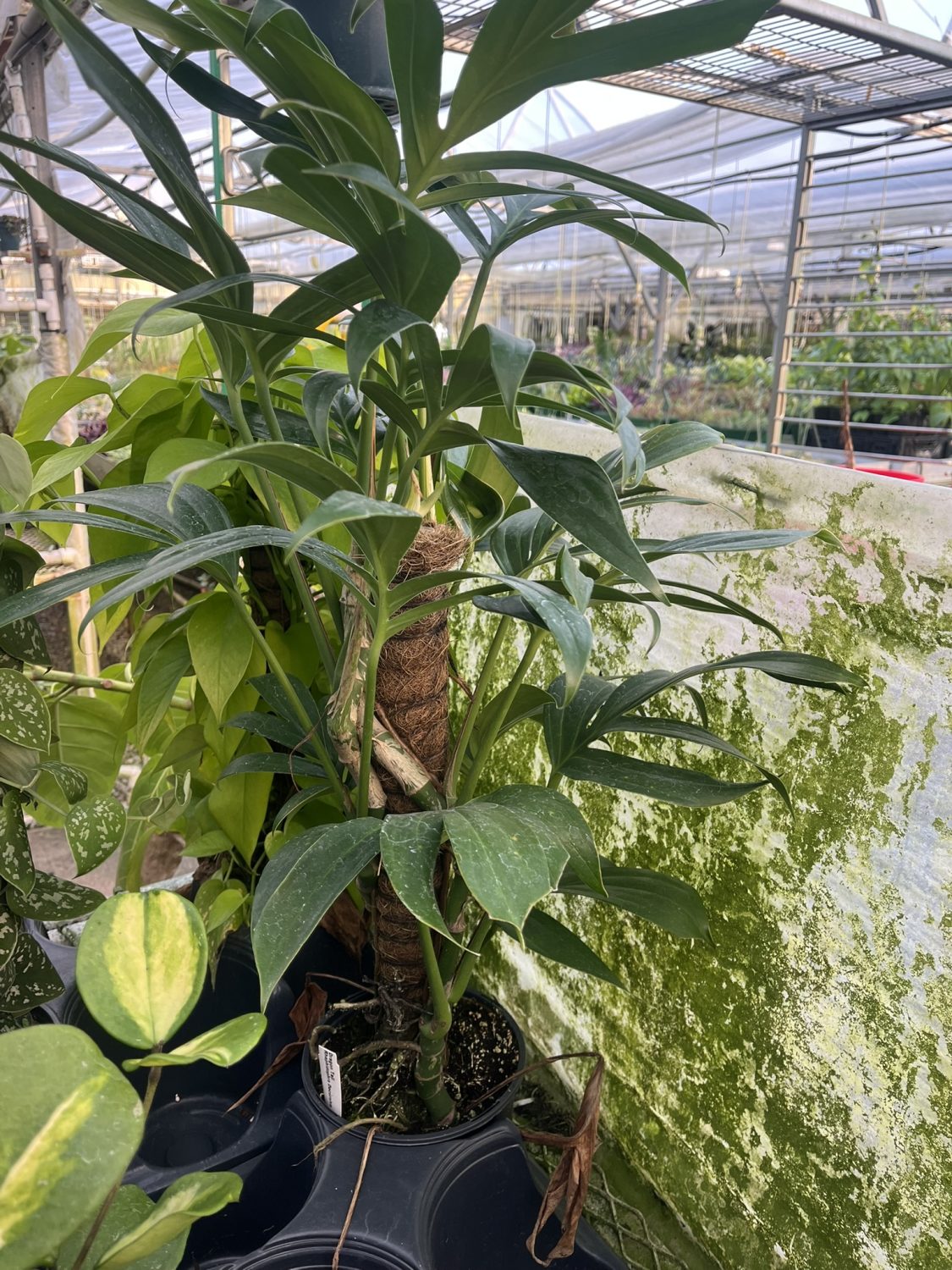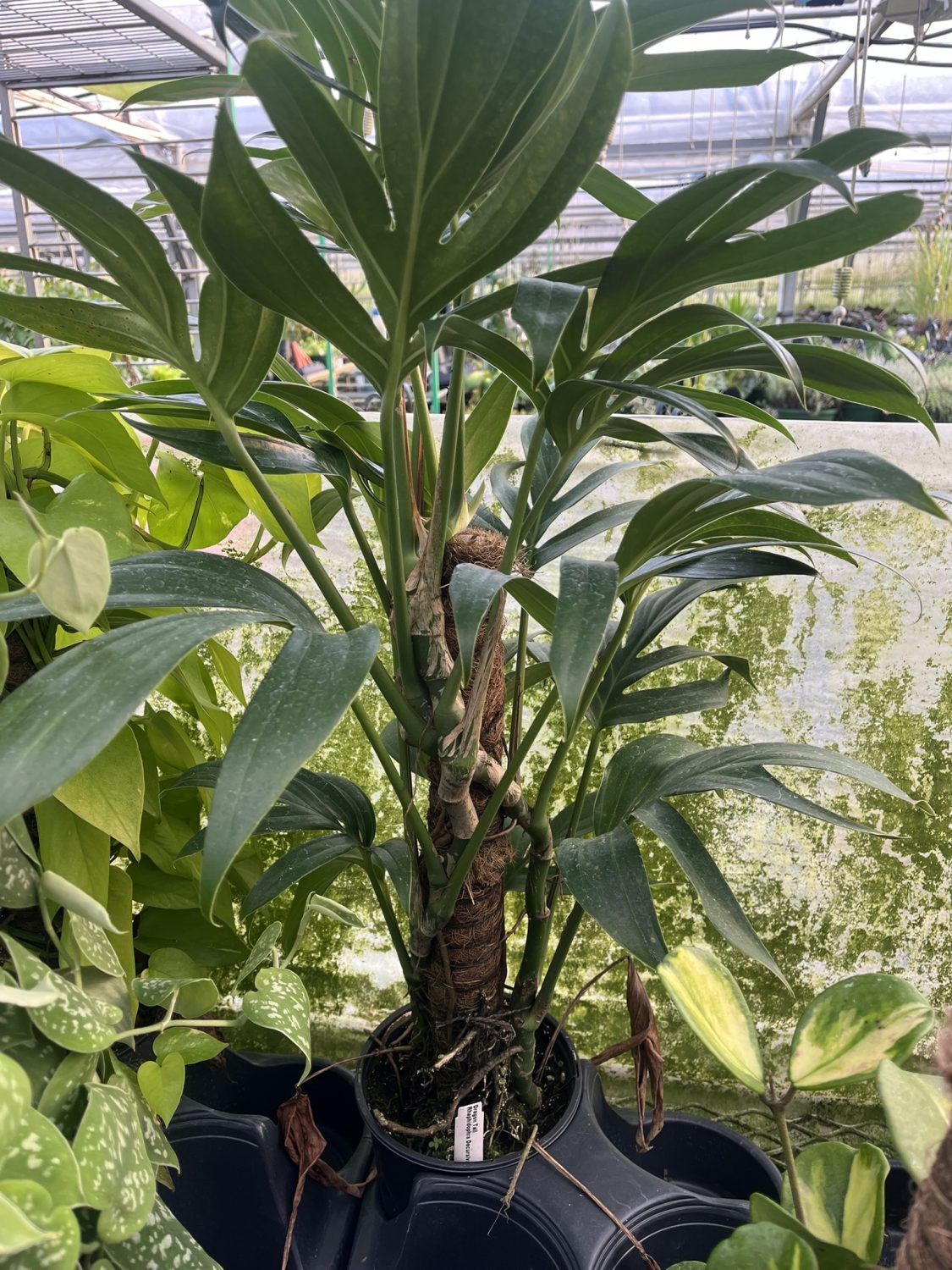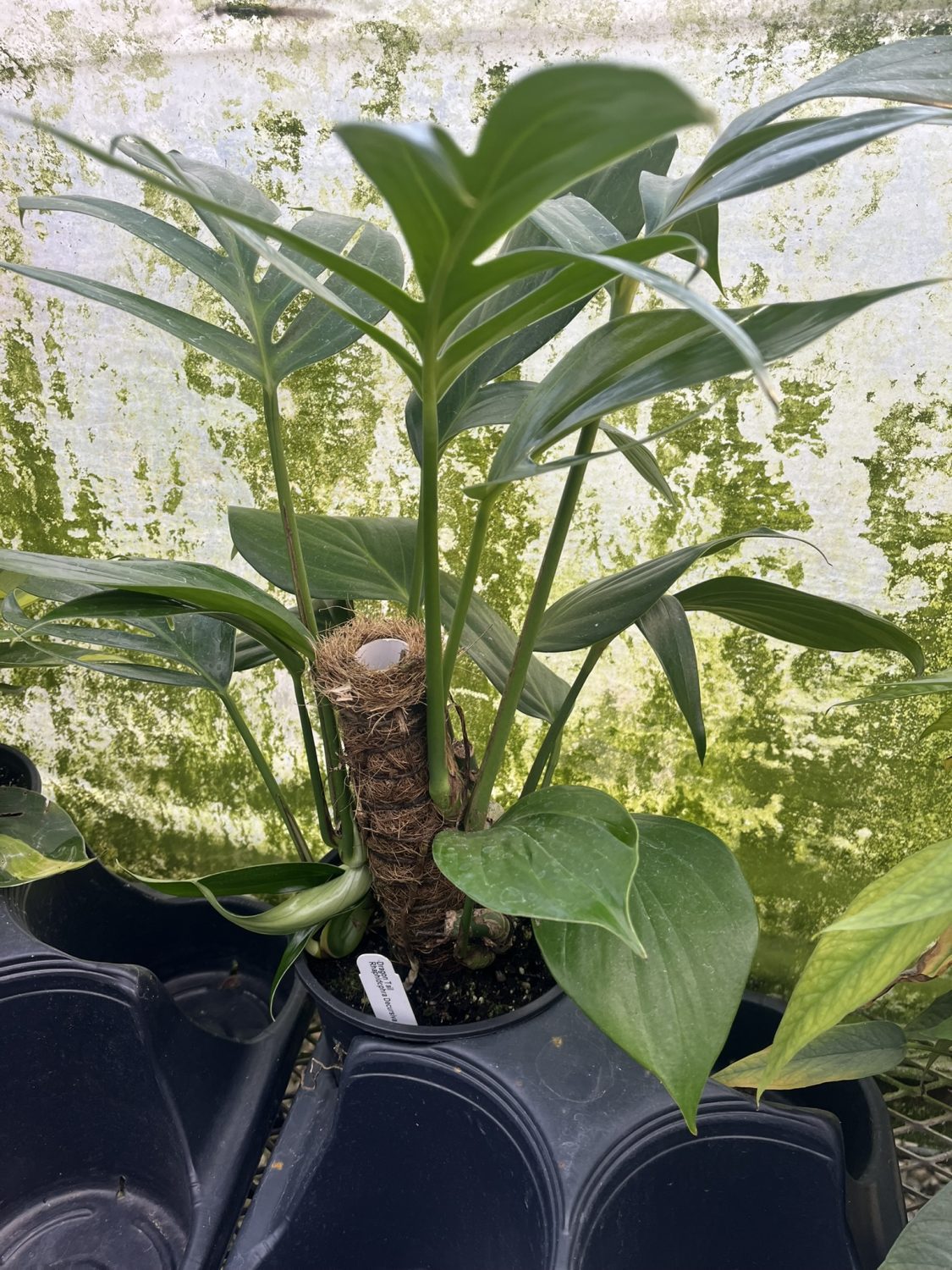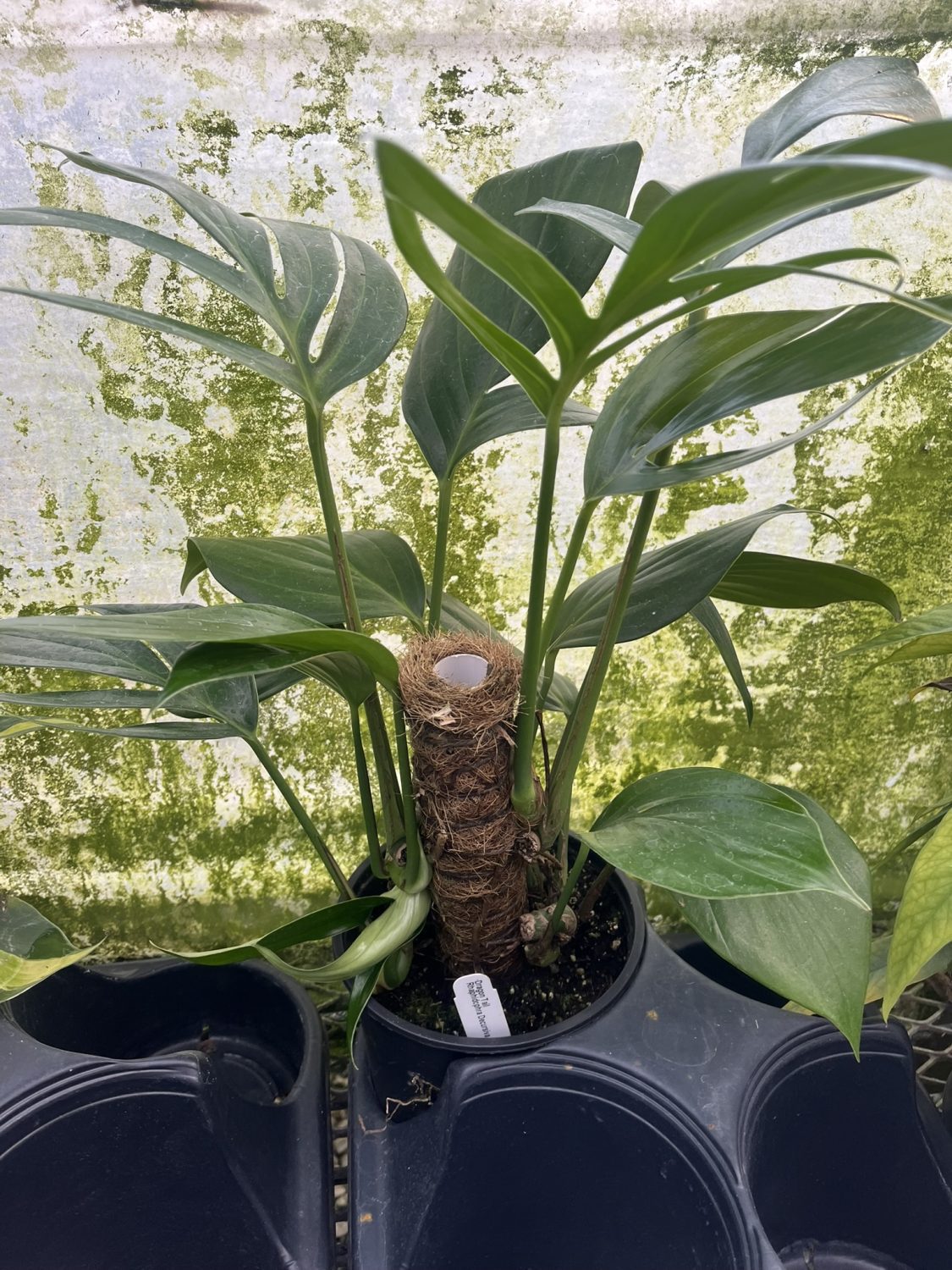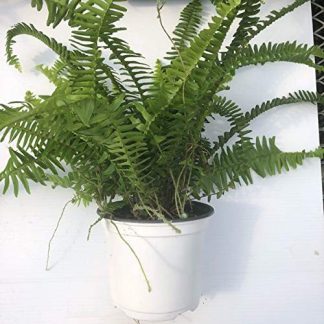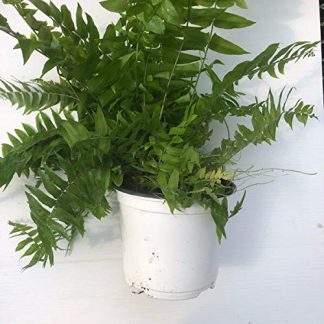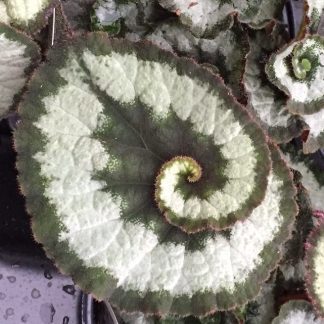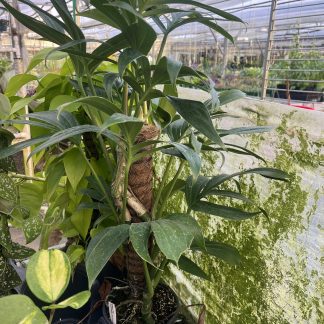Description
Rhaphidophora decursiva — “Dragon Tail” With Bold, Sculptural Leaves
Meet Rhaphidophora decursiva, also called Dragon Tail. It starts with simple green leaves. Then, as it climbs and matures, the leaves grow huge and deeply split—like a dragon stretching its wings. It is dramatic. It is easy. It turns empty corners into living art. In other words, you get a fast, forgiving climber that makes your space feel lush and alive.
We’ll walk through care, setup, and styling—step by step. We keep it friendly and clear, so you feel ready to grow with confidence from day one.
Why We Love Dragon Tail
It transforms over time. Young plants have smooth, entire leaves. As the vine climbs, fenestrations (deep cuts) appear. Each new leaf gets bolder. You get a “before and after” show on the same plant.
It climbs, not sprawls. Dragon Tail grows upward on a pole, plank, or trellis. Instead of taking over floors and tables, it rises. That means big drama with a small footprint.
It forgives. Life gets busy. This plant stays steady with simple routines—bright, indirect light, airy mix, and regular watering. After more than a few weeks of consistent care, you’ll see stronger stems and larger leaves.
It fits many styles. Modern loft. Cozy nook. Sunny home office. Dragon Tail brings a clean, sculptural vibe anywhere.
Fast Facts You’ll Want Handy
- Botanical name: Rhaphidophora decursiva
- Common name: Dragon Tail
- Plant type: Aroid climber (evergreen vine)
- Light: Bright, indirect; soft morning sun is welcome
- Water: When the top 1–2 inches of mix feel dry
- Humidity: Medium to high (ideally 50–70%)
- Temperature: 65–85°F for best growth
- Growth habit: Climbing vine with aerial roots; leaves become deeply lobed with maturity
- Support: Moss pole, wood plank, or trellis
- Pet safety: Considered toxic if ingested (calcium oxalate); keep away from nibblers
Light: Bright and Gentle Wins
Give Dragon Tail bright, indirect light. Near an east window is perfect. Gentle morning sun builds strong growth. Midday sun can be harsh, so use a sheer curtain if your best spot faces south or west.
Watch the signals:
- Too little light: Long gaps between leaves, smaller leaves, and slow climbing.
- Too much light: Pale patches or crisp edges.
Rotate the pot a quarter turn each week. This keeps the vine straight and shares light with all leaves.
Water: Steady Rhythm, Happy Roots
Water when the top inch or two of your mix feels dry. Soak until water drains from the bottom. Then let the pot breathe. This soak-and-breathe rhythm keeps roots healthy.
Simple guardrails:
- Don’t let it sit in water.
- Don’t let the whole pot go bone-dry for long.
In other words, aim for even moisture with full drainage. You’ll see firm leaves and steady new shoots.
Humidity and Temperature: Warm Air, Soft Mist
Think tropical. Hold temps between 65–85°F. Aim for 50–70% humidity. A small humidifier helps in winter. Grouping plants also lifts the local humidity. Light misting is fine, but keep leaves dry at night to avoid spots.
Tip: If edges brown or new leaves stall, nudge up humidity and check your watering pace.
Potting Mix: Airy, Chunky, Aroid-Friendly
Dragon Tail loves air around the roots. Use a well-draining, chunky aroid mix. Here’s a blend that works:
- 1 part high-quality potting mix
- 1 part medium orchid bark
- ½–1 part perlite or pumice
- A handful of coco chips or long-fiber sphagnum for gentle moisture
Keep it fluffy, not compact. Air pockets protect roots and fuel fast growth.
The Climbing Setup: Give It Something to Hug
Support is the secret to big, mature leaves. Choose one:
- Moss pole: Classic, moisture-friendly, easy for aerial roots to grip
- Wood plank (or “totem”): Clean, modern lines; roots latch with ties
- Trellis: Great for shaping a leafy “screen” behind a desk or chair
Tie stems loosely with soft plant tape. As nodes touch the support, aerial roots grab on. Instead of letting the vine trail, train it up. You’ll get larger, more dramatic leaves sooner.
Feeding: Light and Regular
Use a balanced, gentle fertilizer at half strength every 2–4 weeks during spring and summer. In fall and winter, feed less. You want calm, even growth—no salt build-up, no rush. If leaves are smaller than before, review light first, then add a touch of feed.
Repotting: When to Refresh
Repot every 12–24 months or when the mix breaks down. Signs it’s time:
- Water lingers longer than normal
- Roots coil tightly at the bottom
- The plant wants a taller support
Move up one pot size, refresh the mix, and set a sturdy pole. Water well and let it settle. Growth often jumps after a good repot.
Pruning and Shaping: Clean Cuts, Fuller Look
Snip to shape in spring or early summer. Cut just above a node. New shoots will branch, giving a fuller, denser plant. Remove weak or leggy stems and re-tie strong stems to the support. Short, regular sessions beat big, rare trims.
Propagation: Easy Node Cuttings
Propagation is simple:
- Take a 2–3 node cutting with at least one leaf and one aerial root nub.
- Let the cut end dry for a few hours.
- Place in water or nestle into your airy mix against a pole.
- Keep warm and moderately humid.
Roots form first. A new shoot follows. When roots are a few inches long, pot into your aroid mix and secure to a support.
Common Issues and Kind Fixes
- Yellowing leaves: Often overwatering or old leaves aging out. Improve drainage and review your rhythm.
- Crisp edges or pale patches: Too much direct sun. Pull back or add a sheer curtain.
- Slow growth, small leaves: Low light or tight mix. Brighten the spot and fluff the substrate.
- Droop after repot: Mild transplant stress. Keep warm and slightly humid; growth should resume.
- Pests (mealybugs, scale, mites): Wipe leaves and stems with a damp cloth. Treat early and repeat weekly until clear. Keep nodes and leaf bases clean.
In other words, light, water, air, and warmth solve most problems.
Styling Ideas You’ll Love
The statement pole. One tall moss pole. One powerful vine. Clean lines and big leaves.
The trellis screen. Train two or three stems on a slim trellis to create a soft, green panel. Great behind a sofa or entry bench.
The plank mount. Strap the vine to a sealed wood plank for a gallery-style look. It reads modern and sculptural.
The shelf hero. Start small on a desk or shelf, then lift to a taller pole as leaves enlarge. You watch the transformation up close.
Indoor or Outdoor?
If you live in a tropical or frost-free climate, Dragon Tail can grow outside in bright shade. Protect it from harsh midday sun and strong winds. For most of us, indoors is best—near bright windows or under quality grow lights. In summer, a shaded patio break can boost growth. Bring it in before nights dip below the mid-60s°F.
Safety Notes for Homes With Pets and Kids
Like many aroids, Rhaphidophora decursiva contains calcium oxalate crystals and is considered toxic if ingested. Keep it out of reach of curious chewers. Wipe sap from skin and wash hands after pruning.
What You’ll Receive
You’ll get a healthy, actively growing Rhaphidophora decursiva with firm leaves and strong nodes. Leaf shape varies by age. Young plants have simple leaves; mature vines develop deep cuts. Provide a support right away so it can climb, settle, and size up fast.
Care Snapshot (Pin Near the Pot)
- Light: Bright, indirect; gentle morning sun is welcome
- Water: When top 1–2 inches are dry; soak, drain, and let it breathe
- Humidity: 50–70% preferred
- Temp: 65–85°F
- Mix: Aroid blend (potting mix + bark + perlite + coco/sphagnum)
- Support: Moss pole, wood plank, or trellis
- Feed: Half-strength every 2–4 weeks in active growth
- Prune/Prop: Cut above nodes; root cuttings easily
- Note: Toxic if ingested—keep away from pets and kids
Who This Plant Fits Best
- The collector who wants dramatic, evolving leaves.
- The stylist who loves tall, clean lines and sculptural shapes.
- The beginner who wants a forgiving climber with clear routines.
- The home office hero who needs a calm, green statement on camera.
Instead of choosing between easy and stunning, you get both in one fast-climbing plant.
Ready to Grow a Living Sculpture?
Set your pole. Mix your airy blend. Pick a bright spot. Tie the stem and watch the leaves size up. We’ll cheer with you as your vine climbs and those dragon-like splits appear.
Leaf by Leaf, Bigger and Bolder
Rhaphidophora decursiva turns simple care into show-stopping form. With kind light, steady water, and a sturdy support, your Dragon Tail grows from neat green leaves to grand, sculptural fronds. In other words, it rewards our small daily habits with big, leafy drama. Bring one home and let the transformation begin.

